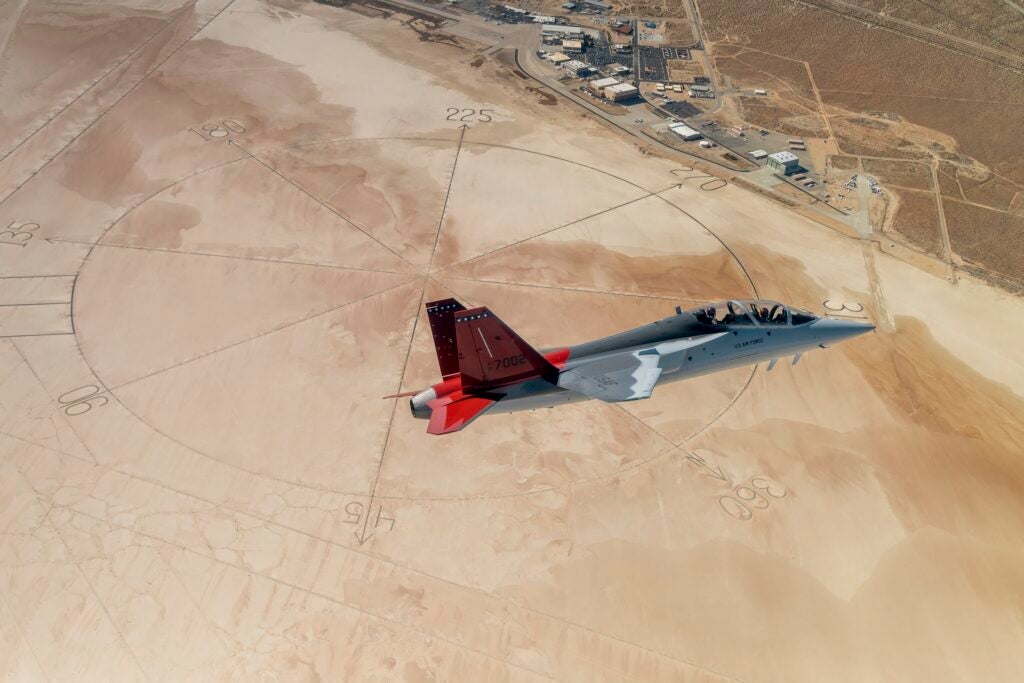T-7A Red Hawk Advanced Trainer Set For Next Flight Testing Phase
Boeing announced on Thursday that the first “production representative” T-7A Red Hawk advanced trainer had arrived at Edwards Air Force Base in California to begin its next phase of flight testing.
The Red Hawk was piloted by a joint U.S. Air Force and Boeing crew for the 1,400 mile journey, with the aircraft stopping at Vance Air Force Base in Oklahoma, Kirtland Air Force Base in New Mexico, and Luke Air Force Base in Arizona to refuel, giving personnel at the bases an opportunity to see the new advanced trainer.
“This is a pivotal moment for the T-7 program,” said Evelyn Moore, Boeing vice president and program manager, T-7 programs. “Bringing the T-7A Red Hawk to the heart of the U.S. Air Force’s test community at Edwards for dynamic flight testing will prove the jet’s performance as an agile and safe trainer for future pilots.”
Once Air Force test pilots become familiar with the aircraft, they will expand the flight envelope starting with flutter testing before moving on to test mission systems. Two more Red Hawks will be delivered to Edwards to test various flight attributes and systems as part of a rigorous series of tests.
“Like most test programs, we’ll have discovery and we’ll overcome it quickly,” said Col. Kirt Cassell, division chief, U.S. Air Force, T-7A Red Hawk program. “This is the right team to go after any challenges we find.”
Boeing was awarded a $9.2 billion fixed-price incentive fee contract in 2018 for 351 T-7As, 46 simulators and their support. The Red Hawk, named as a tribute to the red-tailed aircraft of the Tuskegee Airmen, will replace the Air Force’s 60-year old T-38 Talon advanced trainer fleet.
While Boeing and development partner Saab have claimed that the Red Hawk’s extensive use of digital design reduces costs and accelerates development, the Air Force told Defense News in April that problems with the Red Hawk’s ejection system had delayed the decision to start low-rate initial production of the T-7 to February 2025, with initial operating capability not expected before 2027, three years after the initial IOC goal of 2024.
According to the U.S. Government Accountability Office, the delays and other complications have now resulted in Boeing losing over $1 billion on the T-7 program.

